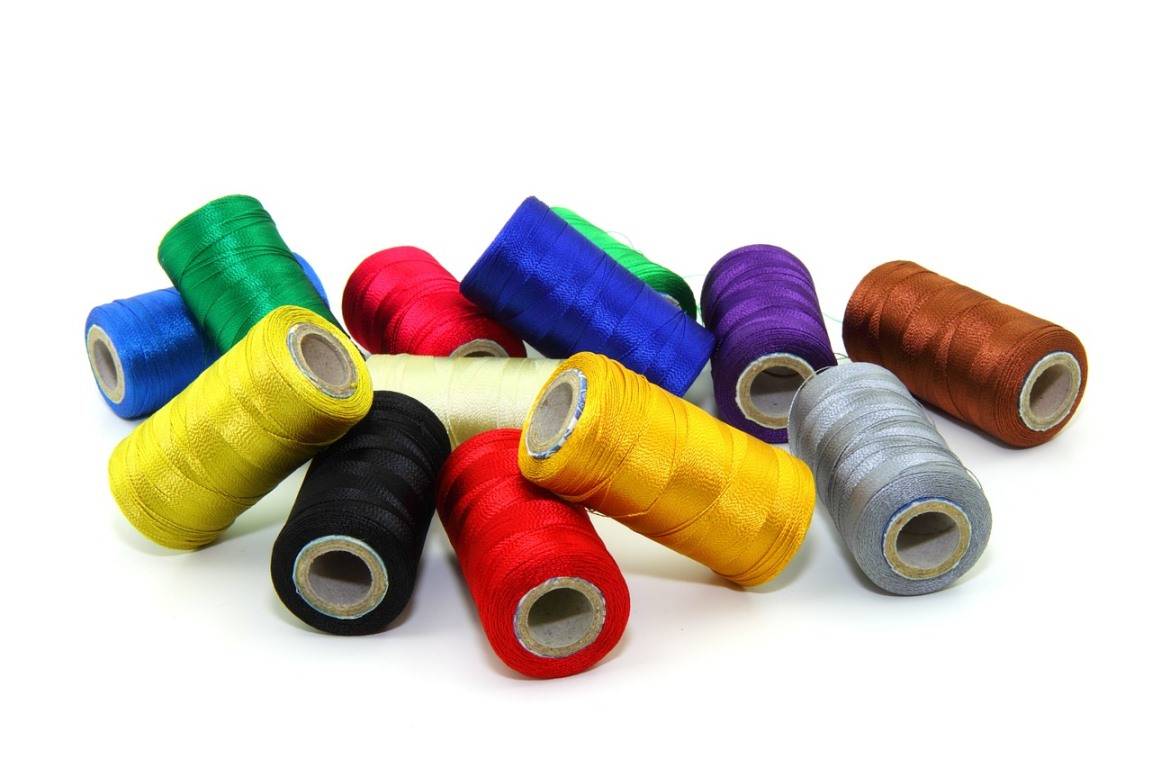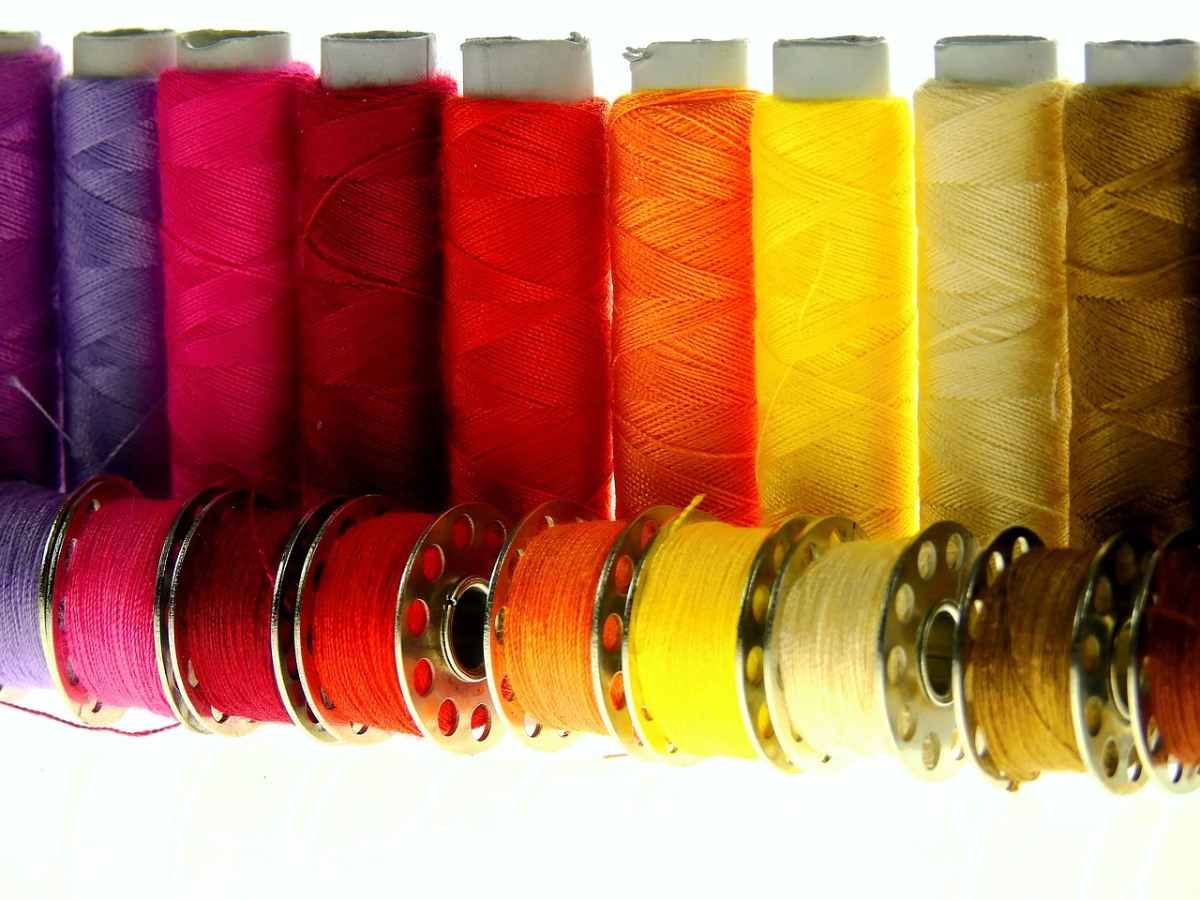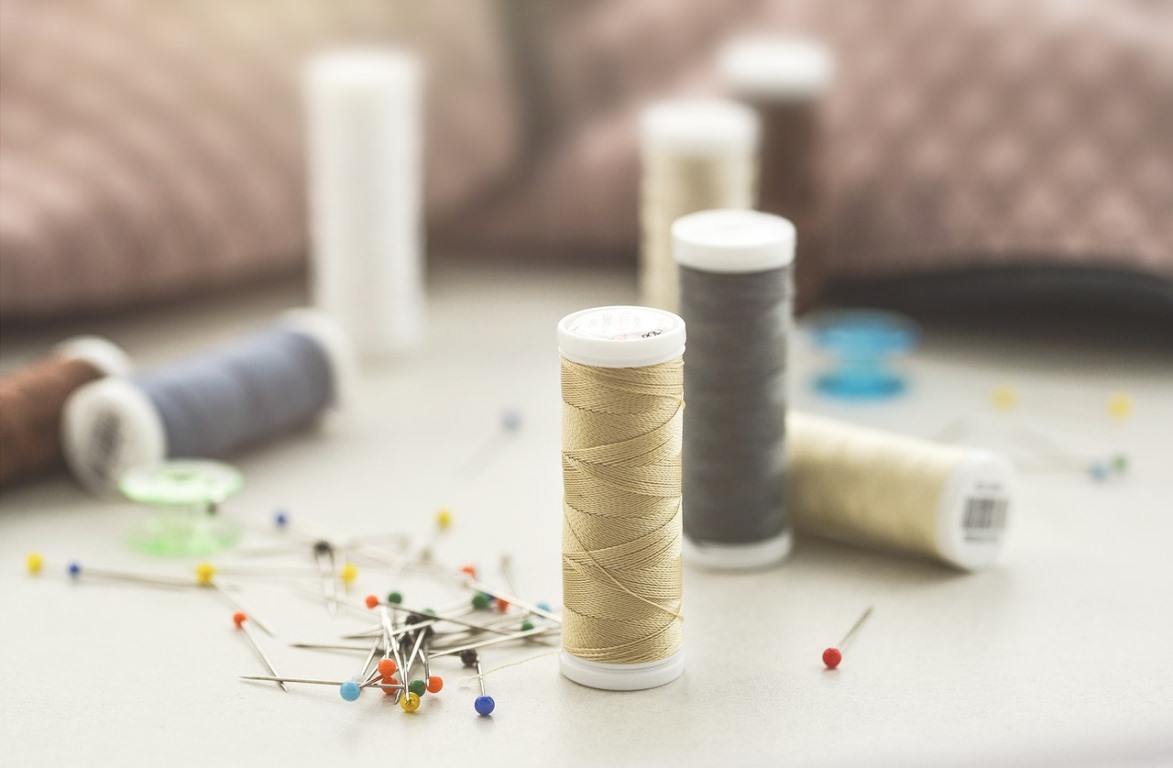Introduction to Sewing Thread Project Report, Manufacturing Process, and Business Plan: About 95 percent of all sewing thread manufactured is absorbed in commercial and industrial sewing. Sewing thread is differentiated from yarn as the thread is useful for sewing together garments or other clothes, but the yarn is the group of fibers that assists to weave or knit into a textile fabric. The terms are puzzling and are often used interchangeably;
A guide to Sewing Thread Project Report, Manufacturing Process, and Business Plan

The three basic types of thread are depended on their origin. They are an animal, plant, or synthetic. Silk thread, Cotton threads, Nylon, and polyester threads.
Business plan for starting Sewing Thread Manufacturing Business
Firstly, you need to craft a perfect business plan for starting a Sewing Thread Manufacturing Business, or any other kind of business unit which includes the following points:
- Implementation schedule
- List of approvals required
- Area required
- Raw materials
- List of machinery
- Manufacturing process
- Project economics
- Profitability
Implementation schedule of Sewing Thread Manufacturing Business
- Market analysis and demand, applying for loan 0 – 1 month
- Preparation of business plan 1 – 2 months
- Financial support or investment 2– 4 months
- Selection of location and establishment of unit 3 – 4 months
- Power and water connection facility: 4 – 5 months
- Building construction and shed development 5 – 6 months
- Machinery and equipment purchase 6 – 7 months
- Procuring raw materials and recruiting of manpower 8 – 9 months
- Trial operations 10th month
Market potential of the Sewing Thread Manufacturing Business
In the coming years, thread manufacturing could adapt to new varieties of clothing designs and fabrics. Futurists may plan that clothing and its varieties will become obsolete; however, the reality is that the customer plans to express personality by a closet filled with clothing for various occasions. Thus, these clothes are is sewn together by particular threads.
License, registrations, and permissions required to start Sewing Thread Manufacturing Business in India
To start a small-scale Sewing Thread Manufacturing business unit, you need to apply for the below list of registrations and licenses. It is suggested to verify the regular of your state and do the registrations accordingly.
- Register your organization
- Trade License from your local municipal authority
- MSME Udyog Aadhaar Registration for the business
- GST
- NOC from State Pollution Control Board
- Trade License
- Shop License
- VAT registration.
- IEC number
- BIS Certification
- Trade Mark registration
- ISO certification
Raw materials required for starting Sewing Thread Manufacturing business
Silk thread
Silkworms give rise to cocoons that are major structures to produce silk. The female silkworms get energy by feeding on mulberry leaves up till the worms mature and start spinning cocoons. The cocoons are collected while the pupas are still inside and the manufactured silk from it is famous as Nett silk; cocoons are also collected after hatching is completed and silk from this type of cocoon is popular as Schappe silk.
Cotton thread
Cotton is reaped from cotton crops in the field and transformed into large bales. The cleaned cotton fibers are called laps. The laps are added to a carding machine that separates the fibers. Next, combing, cleaning, and sorting of ready fibers are performed for processing them into thread.
The manufacturing process of Sewing Thread
In case if you miss this: Neem Oil Manufacturing Project Report.

Nett silk
- Cocoons with the pupas will be heated with air to sustain the pupas inside.
- The cocoons are placed in water and a brushing wave unwraps the silk thread; a single thread might be up to 3,000 in length.
- We can develop two types of silk now. In both types, silkworm cocoon is used to manufacture silk thread, but one processes the cocoons with the pupa, producing soft silk popular as nett silk. As it is obtained with an older, hatched cocoon, schappe silk production starts with the soaking, next washing, then softening, and finally drying the cocoons. Later, these cocoons will be passed through steel rollers that have combs to obtain some bundles of long, straight fibers of silk, there the silk will get twisted, combed, and spun as thread.
- Numerous threads from the one cocoon are wound and organised in long loops or hanks to make single yarn. Three among these single yarns will be twisted to obtain nett silk thread.
Cotton thread
- The fiber is sensibly twisted to form roving, and the roving is drawn and twisted repeatedly.
- It is spun to make a single thread that is wrapped and twisted with others to develop the thread.
- Cotton thread is made with an open flame and mercerized by immersing it using caustic soda. This step will give a tough structure to the thread and improves its texture. The treated cotton thread will be wound on the bobbins or to cones.
Dyeing and packaging of Manufactured Sewing Threads
- Various types of thread could be done similarly.
- After thread gets manufactured, then it will be dyed. The dye is mixed using large vats; many colors can be used, and dye mixing is optimized and supervised by a computer. Large cones or bobbins of manufactured thread are introduced into pressurized vessels, and the dye (and other chemicals) will be added to the vessels using the machines. After some time, they are removed from the dyeing vessel and left for drying for about one day. In a day, dyeing of around 6.6 tons (6 MT) of thread could be possible; which is around 200 million m (66 million yds) of sewing thread.
- The dyed thread is wound using smaller spools that will be used for homes or factories, and the spools are sent for transportation into boxes. Optical devices screen the spool winding and packing stages.
Sewing Thread Project Report/Economics of Sewing Thread Manufacturing Business in India
How about this: Lavender Oil Manufacturing Project Report.

Fixed Cost
Plant & Machinery = Rs 1,87,200
Miscellaneous fixed assets = Rs 82,500
Preliminary & Preoperative Expenses = Rs 4,950
Total Fixed Cost = Rs 2,74,650.
Working Capital Cost
Salary & Wages: Rs. 27,500
Administrative expenses: Rs. 13,666
Selling expenses: Rs. 3,300
Raw Materials: Rs. 2,20,000
Utilities: Rs. 3,880
Total Working Capital Cost: Rs. 2,68,316
Total Cost of the Project: Rs. 5,42,966
Sale price of Sewing Thread: Rs. 8,75,000 per year.
Profitability in Sewing Thread Manufacturing Business: Rs. 8,75,000 – Rs. 5,42,966 = Rs. 3,32,034.
Different strategies to sell your Sewing Thread product
To sell your Sewing Thread product you need to register it online on B2B websites and B2C websites. You can even distribute some samples in the nearby supermarkets, Tailoring shops, boutiques, or in the wholesale markets where your product gets well purchased.
B2B websites: The websites like –
- Alibaba,
- Indiamart,
- Tradeindia,
- ExportsIndia will take the bulk orders for your Sewing Thread product.
B2C websites: To sell the products directly to the customer, you may also market in the well-established websites like–
- Amazon,
- Snapdeal,
- Flipkart, etc.
Try new ideas in the starting and just concentrate on promoting your business. Always remember that your business profits will be raised depending upon the quality you provide to the customers.
- Handicraft Making at Home: A Small Profitable Business Idea
- Pet-Tech Startups: Innovations for Animal Lovers
- Tech Repair Services: Meeting the Demand for Gadget Maintenance
- Maximizing Rewards: Smart Credit Card Habits for Cashback and Points
- Ultimate Guide to Making Money from Goat Milk Business
- How to Start an Agricultural Value Added Product Business
- Value-Added Business Ideas for Greenhouse: The Best Ways to Make Profits with Greenhouse Farming
- How to Make Profits with Organic Country Chicken: Best Strategies for Beginners
- 10 Value-added Business Ideas for Millets: Low-investment and Highly Profitable
- Why Cleaning Service Business Becoming More Profitable in Metro Cities in India
- 10 Best Businesses to Start in Ayodhya for Profits
- Top Drone Business Ideas in India: Unlocking Aerial Innovation & Opportunities
- Top 10 Service Businesses You Can Start with No Money
- Ultimate Guide to Starting a Home-Based Advertising Agency Business
- Starting a Nail Salon Near Your Location: Check List, Business Plan, Licensing, and Opening Instructions
- Construction Company Name Ideas: Guide to Create New Construction Company Names
- 8 Best Small Businesses to Start in Hyderabad: Low-Cost and Profitable
- 10 Best Small Businesses to Start in Massachusetts: Low-Cost and Profitable
- 10 Best Small Businesses to Start in Maryland: Low-Investment and Profitable
- 10 Best Small Businesses to Start in Delaware: Low-Investment and Profitable
- 10 Best Small Businesses to Start in Connecticut: Low-Investment and Profitable
- Top 10 Best Online Pet Business Ideas: Exploring Cats to Dogs
- 10 Best Small Businesses to Start in Colorado: Low-Investment and Profitable
- Top 10 Profitable Small Business Ideas in California: Low-Investment Tips
- From Little Rock to Fayetteville: Top 10 Profitable Small Business Ideas in Arkansas
- Top 10 Profitable Small Business Ideas in Alabama: Discover Opportunities in Alabama’s Growing Cities
- Top 10 Profitable Small Business Ideas in Arizona: Discover Opportunities in Arizona’s Growing Cities
- Golf Business Ideas: Exploring Golf Course Money Making Ideas
- Low Capital Profitable Small Farm Ideas: Farming Ideas to Make Money
- How to Write a Business Plan for Daycare: Exploring from Financial Projections to Risk Management
- Home Daycare License Requirements: Exploring State-wise In-home Daycare Requirements
- How Profitable is Day Care Business: How Much Does a Daycare Owner Make a Month or Year?
- How to Open a Daycare Center in Toronto, Canada: Business Plan, Licenses and Permits